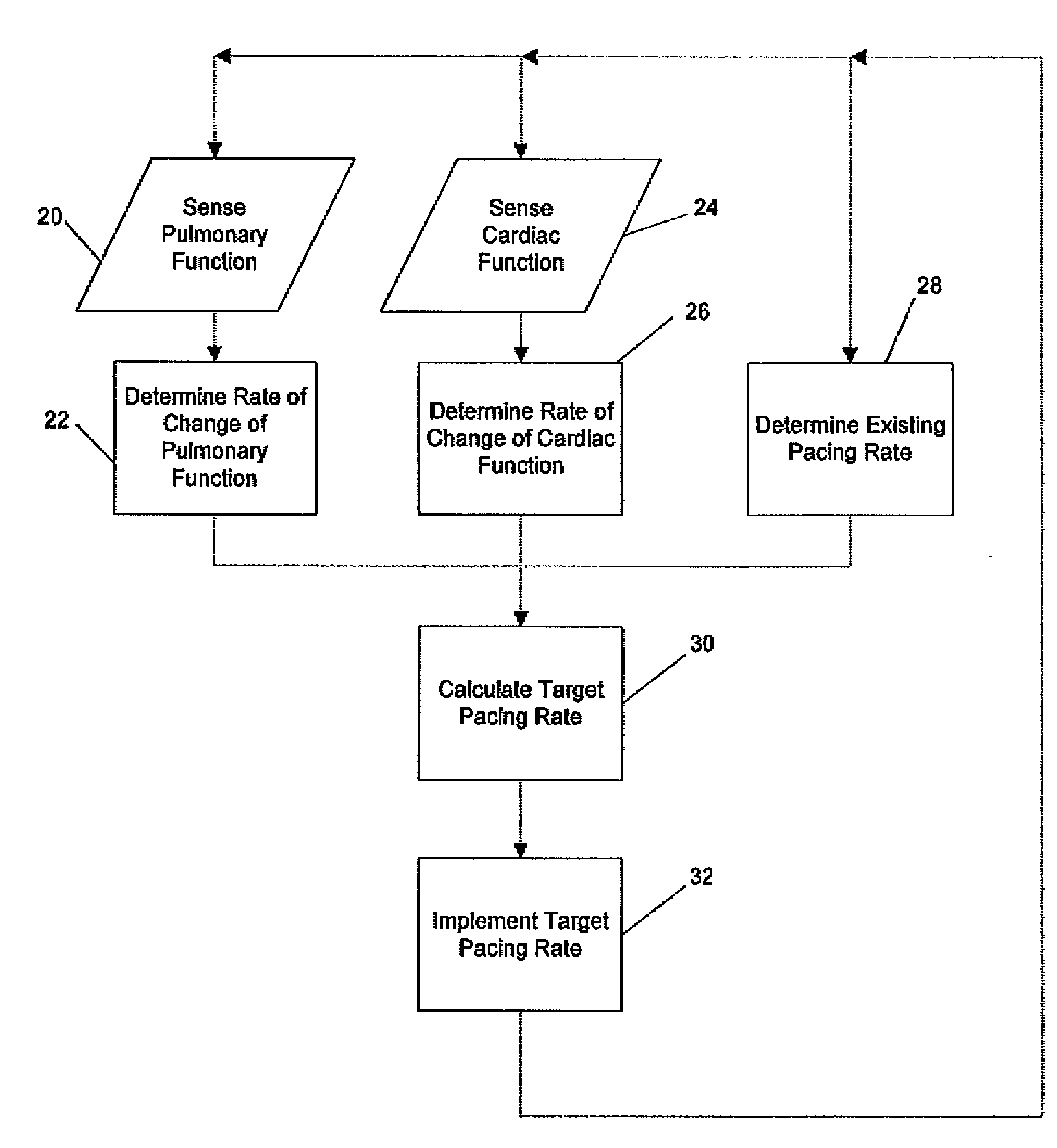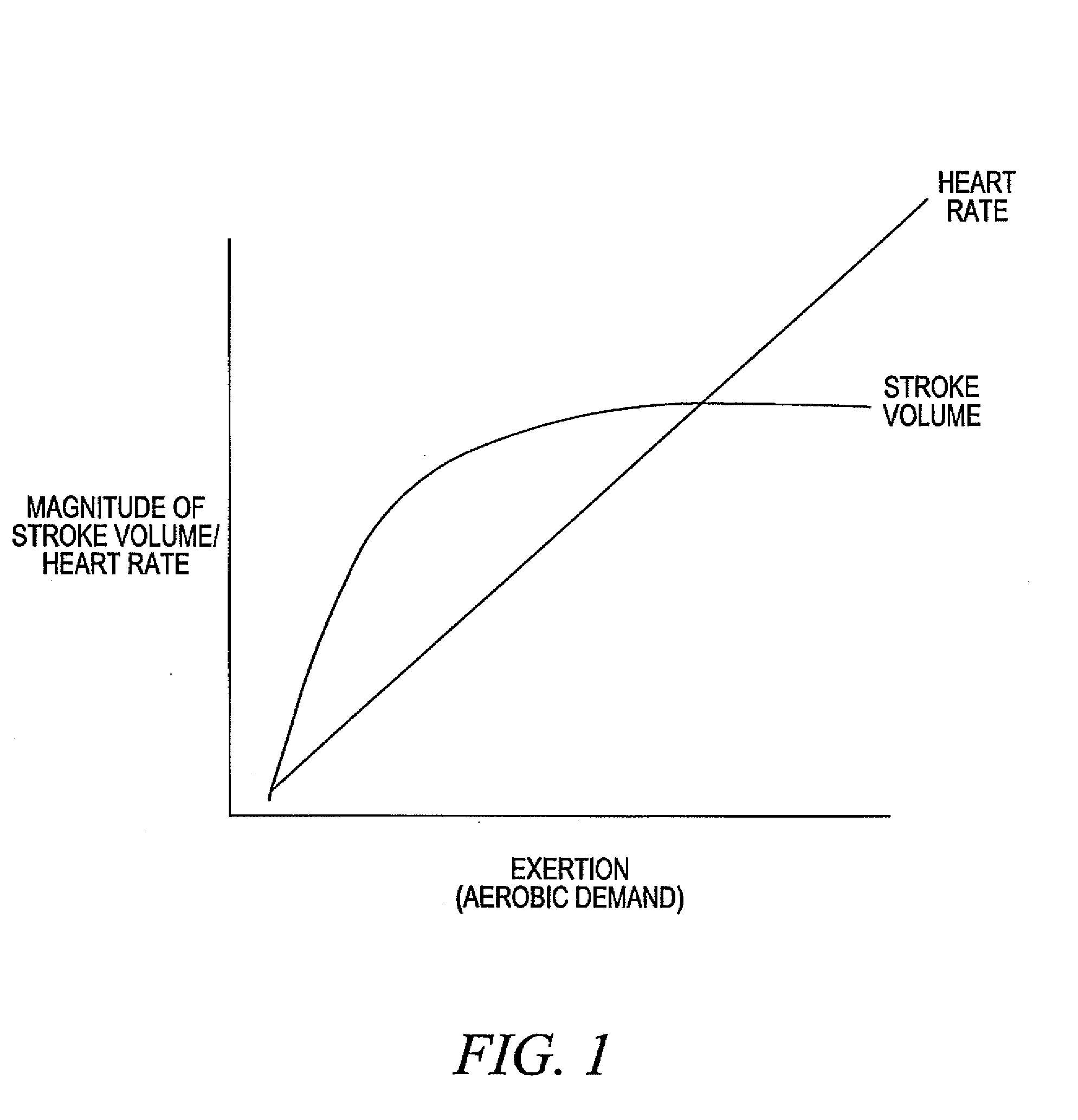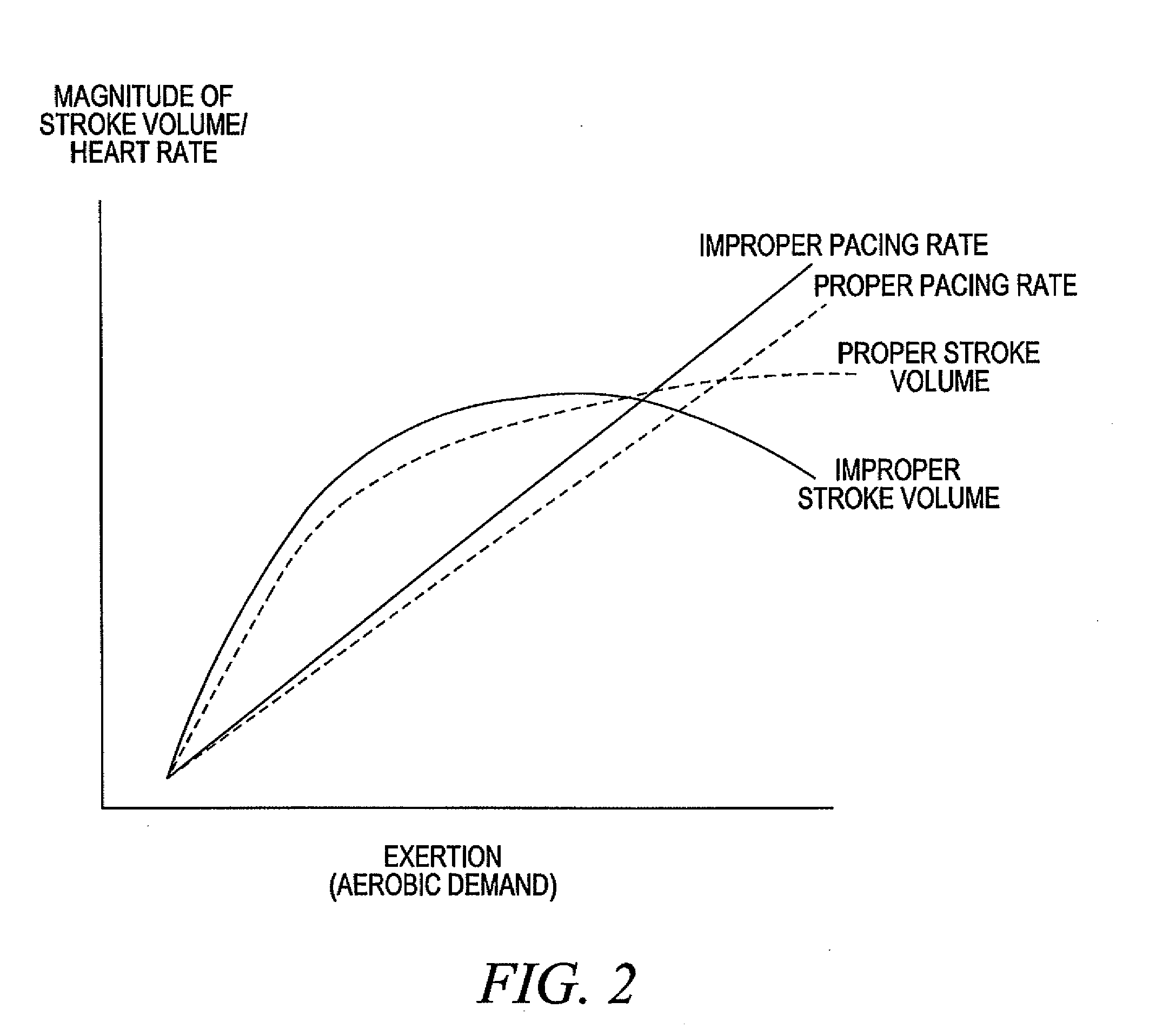Rate Adaptive Cardiac Pacing Systems and Methods
a pacing system and adaptive technology, applied in the field of cardiac rhythm management systems, can solve the problems of difficulty in determining whether the body motion is sensed, the device needs to adapt the pacing rate, and the pacing rate is often modulated in a way that is not appropriate for the device,
- Summary
- Abstract
- Description
- Claims
- Application Information
AI Technical Summary
Benefits of technology
Problems solved by technology
Method used
Image
Examples
Embodiment Construction
[0023]In the heart of a healthy person, cardiac output is naturally increased in response to exertion in order to deliver increased blood flow to satisfy physiological demands. Cardiac output refers to the volumetric blood flow being pumped by the heart, and is defined as the product of stroke volume and heart rate. Stroke volume is the volume of blood that is ejected from the ventricle (right or left) during each contraction of the heart. A normal, healthy person's body increases both stroke volume and heart rate as necessary to satisfy the body's requirement for cardiac output. The characteristic increases of stroke volume and heart rate in response to exertion in a healthy heart are shown in FIG. 1. As exertion increases from a starting level, stroke volume typically increases rapidly and then gradually plateaus. Stroke volume is increased through a number of mechanisms, including increased ventricular preload (the volume of blood present in a ventricle of the heart, after passiv...
PUM
 Login to View More
Login to View More Abstract
Description
Claims
Application Information
 Login to View More
Login to View More - R&D
- Intellectual Property
- Life Sciences
- Materials
- Tech Scout
- Unparalleled Data Quality
- Higher Quality Content
- 60% Fewer Hallucinations
Browse by: Latest US Patents, China's latest patents, Technical Efficacy Thesaurus, Application Domain, Technology Topic, Popular Technical Reports.
© 2025 PatSnap. All rights reserved.Legal|Privacy policy|Modern Slavery Act Transparency Statement|Sitemap|About US| Contact US: help@patsnap.com



